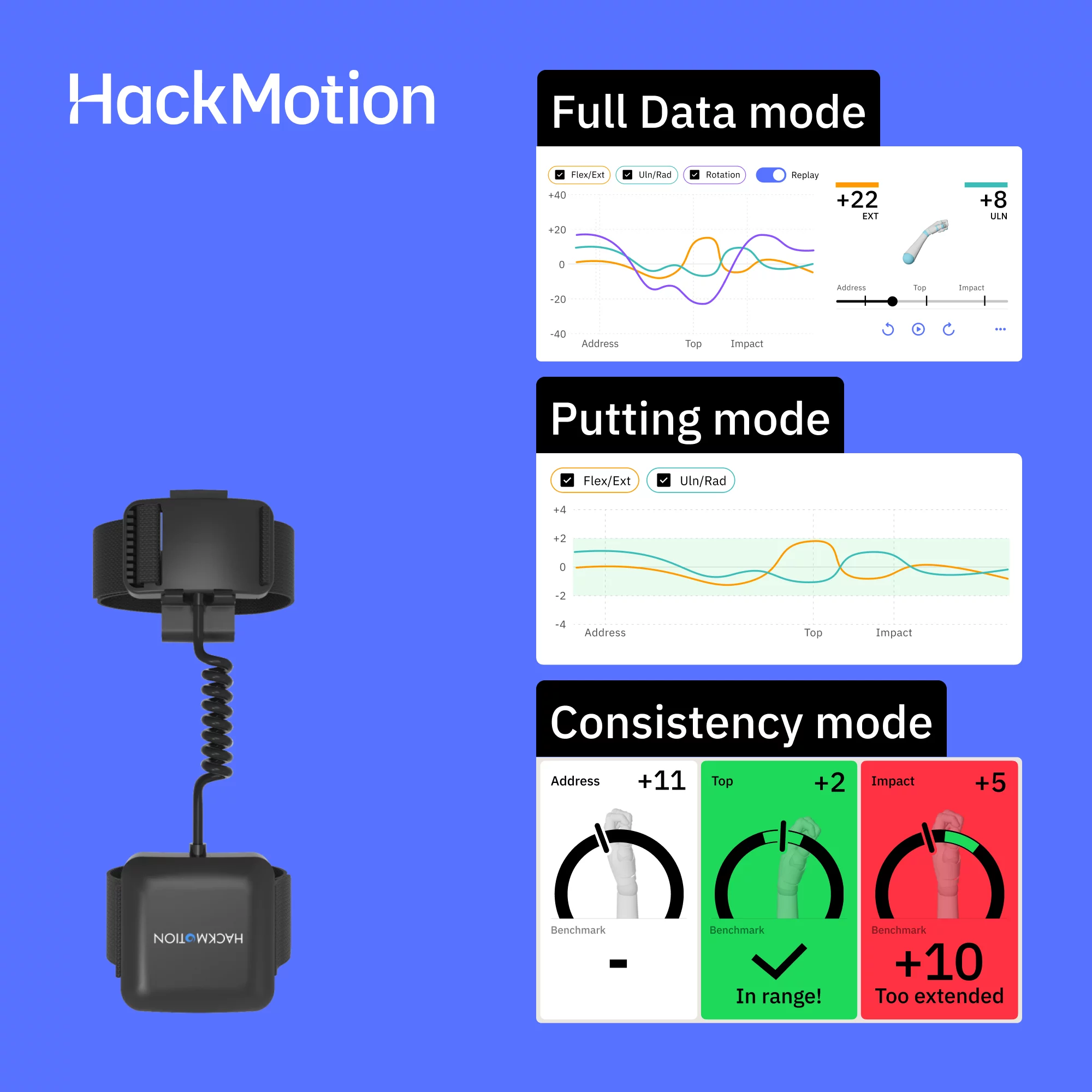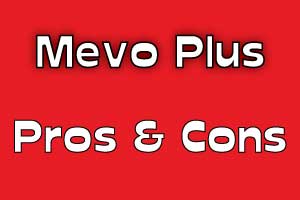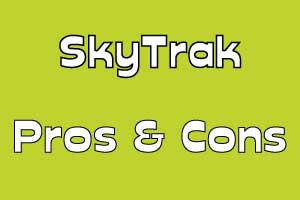Commercial Golf Simulators – How to Grow a Golf Simulator Business in 2024
SHARE
Posted in Your Swing Studio, Room Setup
Imagine transforming your passion for indoor golf into a thriving business that brings incredible golf simulator technology to your local customers. This article guides you through the essentials of launching a commercial golf simulator venture.
To launch a commercial golf simulator business, you will need to invest in cutting-edge yet cost-effective indoor golf technology and secure a prime location with sufficient space for multiple golf simulator bays, while ensuring you meet the needs and demands of the local market.
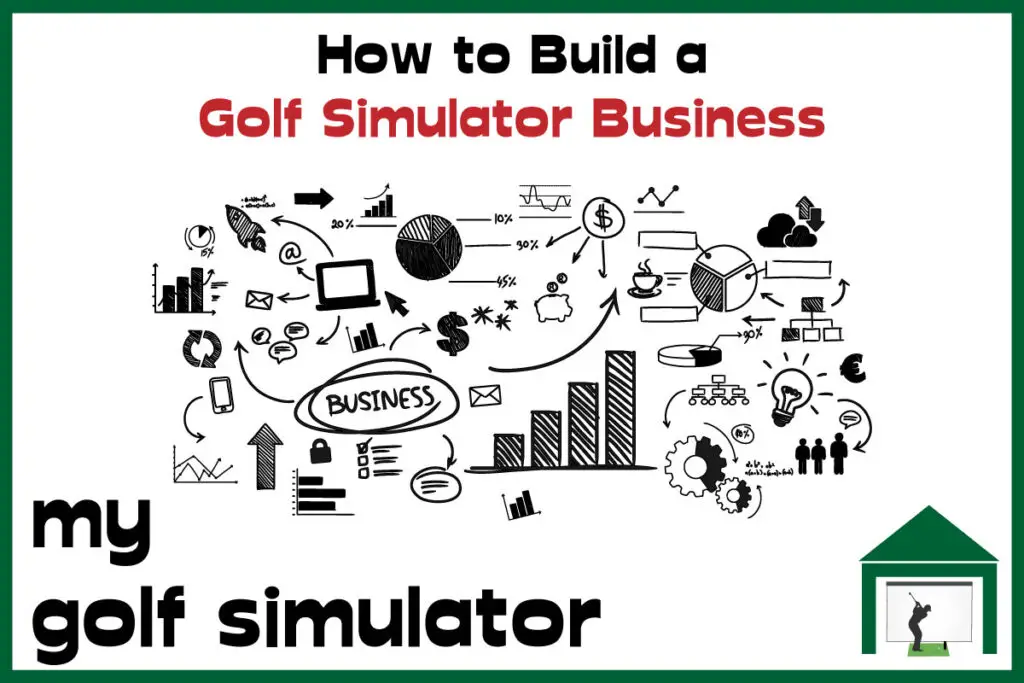
Market Overview and Potential
The commercial indoor golf and golf simulator market is experiencing robust expansion, particularly in the leisure sector.
Advancements in portable launch monitor technology over the last five to ten years have transformed golf simulators into popular features at entertainment venues, where groups enjoy drinks and food while playing.
Simulators offer a social and engaging experience, making them a hit for parties, corporate events, and casual gatherings.

The market is expanding even more as a result of the high-fidelity launch monitors’ decreasing costs, which make the technology more affordable.
As these systems become more affordable, an increasing number of bars, hotels, and recreational centers are incorporating them into their amenities. The ever-increasing accessibility of golf technology is not only attracting seasoned golfers but also newcomers eager to experience the game in a relaxed setting.
Consequently, the indoor golf industry is carving out a substantial niche in the broader leisure and entertainment market.
Benefits of Starting a Golf Simulator Business
- Create a business centered around a hobby you love. Plus, you can use the golf simulator equipment yourself when the customer-facing business is closed.
- Year-Round Revenue: Indoor golf businesses are not affected by seasonal weather conditions, allowing for consistent operation and revenue generation throughout the year.
- Broader Client Base: Such a business can attract a diverse clientele, from serious golfers looking to improve their game to casual players and non-golfers seeking entertainment.
- High Engagement: The combination of sports and leisure offers high customer engagement with the potential for repeat business and customer loyalty programs.
- Event Hosting: The facility can be a prime location for hosting events, parties, and corporate functions, providing additional revenue streams.
- Technological Edge: Entrepreneurs can leverage the latest in golf simulation technology to offer cutting-edge experiences, drawing in tech-savvy consumers and enthusiasts.
- Retail and F&B Opportunities: The indoor golf setting creates opportunities for ancillary sales in food and beverage, as well as golf-related retail merchandise.
- Growth Potential: As the popularity of golf simulators continues to rise, there is significant potential for business expansion, franchising opportunities, and brand development.
Understanding Your Local Target Market
A prospective golf simulator business owner must analyze their local target market. You need to understand the demographics, preferences, and behaviors of potential customers, including their willingness to drive for indoor golf experiences.
Think about:
- The local weather and climate
- Do local courses have long periods of closure due to adverse weather conditions in the winter?
- Hot climate vs cold
- How concentrated is the local audience (city vs rural area)?
- How far will customers need to travel?
- How many golfers are there locally?
- Would the local area benefit from a bar/restaurant format in addition to golf?
- How available is parking in your prospective area?
This analysis ensures the business aligns with customer needs, maximizes engagement, and enhances profitability. Tailoring your business to meet the specific demands of your local market is key to establishing a successful, customer-centric golf simulator venture.
Business Planning and Strategy
Crafting a Business Plan
For a small local golf simulator business, crafting a comprehensive business plan is essential. This plan should detail the market analysis, including an understanding of local golf enthusiasts and competitors, a clear marketing strategy, operational logistics, and financial projections.
It acts as a roadmap, guiding the business through its initial setup and growth phases. A well-thought-out business plan helps in securing financing, if necessary, and ensures that all aspects of the business are aligned towards achieving success in the local market.
A business plan will be even more essential if you need to pitch your business to seek capital investment.
This is a daunting topic, but there is a huge amount of advice and templates out there. Check out the link above.

Setting Clear Business Objectives
Setting clear, achievable business objectives is crucial for the direction and growth of a small local golf simulator business. Objectives should include short-term and long-term goals related to customer satisfaction, revenue targets, market penetration, and service expansion.
These goals provide a framework for decision-making and help in measuring the business’s performance over time. By regularly reviewing and adjusting these objectives, the business can remain responsive to market demands and challenges, ensuring sustained growth and success.
Financial Planning and Budgeting
You must have a clear financial plan and budget when creating any business, but especially a golf simulator business, where startup costs are likely to be high.
You will be looking at a large outlay for equipment. Golf simulators are expensive for even a moderate fidelity home setup, so staffed and insured multi-bay indoor golf centres must come with a high start-up cost.
I will go on to discuss monetization and growth of your business below. In this regard, I suggest a staged approach to your golf simulator business may be best. Perhaps begin with lower-bracket launch monitors and upgrade to premium models later.
There’s no use ploughing in with an order for six GC Falcons without first establishing there is a market for your business in your area.
You can also implement a start low and upgrade later approach to projectors, hitting mats and even PC software. 4K resolution can be a business aspiration if the budget is tight.
There are a large number of things
Choosing the Right Location
Factors to Consider When Selecting a Location
Choosing the right location for your golf simulator business is pivotal for its success. The ideal location balances accessibility with cost-effectiveness, ensuring it attracts the maximum number of customers while maintaining profitability.
Factors to consider include:
- Proximity to target demographics
- Ease of access and parking availability
- Visibility and foot traffic
- Competition in the area
- Rent and operational costs
- Local zoning and regulations
- Potential for growth and expansion
Selecting a location that aligns with these factors can significantly impact the business’s ability to attract and retain customers.

Space Requirements
Selecting a sufficiently large space is essential for accommodating your golf simulator business format and the planned number of bays.
Ensure the venue not only fits the simulators but also allows for comfortable movement, social areas, and additional services, creating an inviting environment that enhances the customer experience and supports operational efficiency.
Larger spaces like these will be harder to come by (and more expensive) in built-up urban environments.
You will require a room height of at least 10 feet to accommodate the range of customers and their individual heights and golf swings.
Golf Simulator Technology
Overview of Golf Simulator Systems
Choosing the right golf simulation technology for your business requires careful consideration, as it significantly impacts space requirements and the customer experience.
Radar-based launch monitors, for instance, necessitate more room compared to camera-based models due to their need for a longer distance to accurately track the ball.
When planning your golf simulator bays, aim for a width of over 15 feet. This ensures a central aim point and accommodates both left and right-handed players in the same session, which is critical for inclusivity and maximizing the appeal of your golf simulator business.
Selecting technology that fits your space and meets diverse customer needs is key to creating a successful and welcoming environment.
You will need to think about the need to physically protect your launch monitor, projector and, computer systems from damage. The level of risk involved when hundreds of golfers interact with your equipment is a lot higher than when one careful owner uses it.

Keeping Up with Technological Advances
When I started writing about golf simulator technology back in early 2020, the landscape was very different. There were far fewer launch monitor choices on offer, with Skytrak dominating the lower end of the market and Foresight and Trackman vying for supremacy at the peak.
There was no 4K short-throw projector available at a price even an affluent golfer could afford. Additionally, the launch monitor options that allowed simultaneous left and right-handed play were, for the most part, prohibitively expensive (Trackman 4 and GC Hawk).
The last five years have seen remarkable advancements in golf simulator technology, significantly enhancing the player experience and accessibility of premium features and specifications.
Launch monitors have become more sophisticated, offering greater accuracy in ball flight data and swing analysis, including advanced club data in even the most budget-friendly systems. The advent of 4K short-throw projectors has revolutionized visual fidelity, providing immersive, life-like golfing environments within a compact space.
I expect to see further advances over the next few years, with even more competition driving golf simulation technology toward an even broader audience.
As a golf simulator business owner, you’re going to have to stay abreast of the advances in tech. If you choose to spend a lot of money on a suite of golf bays today, be aware that some of the technology will be dated or even obsolete in 3-5 years.
Designing Your Space
Creating an Engaging and Functional Environment
The exact design of your golf simulator business will depend on what activities you wish to offer customers in addition to the golf, and whether you will be serving food and alcohol.
You’ll need extra seating and bar space if you want to offer customers the chance to have a beer while playing golf.
Also consider the dividing walls, nets, or spaces between golf bays, to protect one group from a second adjacent group who all have the shanks.

Installation and Setup
Step-by-Step Guide to Golf Simulator Installation
Trust me, setting up a professional-looking golf simulator takes time. The amount of time then increases by orders of magnitude if you need to construct flooring or alter the building itself.
Time is money, and you could easily eat up months of rent before you ever get the space finished. Factor this in when considering acquiring help from tradespeople for complex tasks. A qualified electrician for wiring, lighting, and cable management is a must.
Technical Setup and Troubleshooting
I strongly recommend trying to negotiate professional installation if you are planning on spending a large amount of money with one company on a bundle of launch monitors. This will ensure you have a professional setup and calibration from the outset.
Ongoing support is also a must as if one or more launch monitors stop working, your business will grind to a halt.
Licensing, Legal and Security Considerations
Understanding Planning Laws and Regulations
There are many laws and regulations to consider when opening a new physical business, especially if you need to alter the setup of your premises even a little. This may apply if you need to alter a car park or doors or windows on a property.
The local council or authority may need to know if you’re going to expect an increase in footfall in a sensitive area. Consider the need to submit a planning application or similar notification depending on your local area.
Alcohol Licenses
This is a big one for those wishing to combine a golf simulator business with a bar. Alcohol licenses can be difficult to attain and will take time. This may force you to open the business without the bar aspect and upgrade your plans at a later date.
Remember to factor alcohol licensing into your plans and check the relevant local laws. You’ll also need licenses to show live sports.

Insurance and Liability
You propose to open a business where members of the public (who may be poor golfers) hit solid golf balls in the vicinity of other members of the public. You need insurance!
I recommend speaking to a specialist insurance broker because this type of business may fall outside the realms of a standard off-the-shelf policy.
You will also require a high level of contents coverage given the amount of kit you’ll have in your facility.
Security
Another facet of protection you need to set up is physical security. You must ensure your expensive equipment is safe and secure, both within operating hours and outside of these times. Consider burglar alarms, CCTV cameras, and the entrances and exits to the building.
You’ll need to factor in coverage for theft into the insurance you take out as above. Remember that all your expensive equipment is available for the public to peruse. I recommend securing the portable launch monitors in some form of safe storage after each day.
Marketing Your Golf Simulator Business
Developing a Marketing Strategy
For a small local golf simulator business, developing a marketing strategy starts with understanding the local golfing community and the competitive landscape of indoor golf facilities in the area.
Identify what makes your simulator experience unique—be it advanced technology, coaching offerings, or themed events—and use this to differentiate your business.
Tailor your services to cater to the preferences of local golfers, and craft targeted promotions that address the specific desires and challenges faced by your local market.
You’ll need to design a logo and choose a color scheme. Think hard about this and consider asking a professional for advice. It’s hard to change it once it’s chosen.
Digital Marketing and Social Media
Utilize digital marketing and social media to connect with local golfers and create a community around your golf simulator business.
Focus on local SEO to ensure your business appears when nearby customers search for golfing activities. Share engaging content that showcases the unique aspects of your facility, including customer experiences, special events, and educational tips for improving their game.
Platforms like Instagram and Facebook (eg local golf groups) are ideal for highlighting the immersive experience your simulator offers, using visuals and testimonials to attract a local audience.
Building Partnerships and Local Community Engagement
Strengthening your presence in the local area involves building partnerships with nearby golf clubs, sports stores, and schools to offer cross-promotional deals or events. Perhaps you could offer time in the simulator bays as prizes in local golf competitions.

Engage with the local community by participating in or sponsoring golf tournaments, charity events, and local sports gatherings.
These collaborations not only increase your visibility among potential customers but also establish your business as a committed member of the local golfing scene, fostering goodwill and encouraging word-of-mouth referrals among local golf enthusiasts
Operations Management
Day-to-Day Business Operations
Effective management of day-to-day operations is crucial for the success of a small local golf simulator business. Hiring a manager with a strong background in golf can significantly enhance operational efficiency and ensure that the business runs smoothly.
A manager with golf expertise understands the nuances of the sport and the expectations of golfers, enabling them to oversee daily activities, maintain high-quality simulator experiences, and address any golf-specific concerns that may arise.
Staffing and Training
Building a knowledgeable and skilled team is essential for providing a high-quality experience to customers. Staffing your golf simulator business with individuals who are not only passionate about golf but also technically savvy, especially in troubleshooting launch monitor issues, is key.
Providing comprehensive training on launch monitor technology, including common problems and quick fixes, ensures that your staff can handle technical issues promptly, minimizing downtime and maintaining a seamless experience for customers.

Customer Service Excellence
In the competitive landscape of golf simulator businesses, delivering exceptional customer service can set your establishment apart. Focus on creating a welcoming environment for golfers of all skill levels and ensure your staff is trained to be attentive, responsive, and helpful.
Encourage feedback to continuously improve your service and tailor the customer experience to individual needs. Excellence in customer service fosters loyalty, encourages repeat business, and generates positive word-of-mouth, crucial for the growth of a small local business.
Monetization Strategies
Pricing Models and Packages
For a small local golf simulator business, offering flexible pricing models can cater to a wide range of customers. Implementing a pay-as-you-go option for casual golfers provides the flexibility many customers appreciate, while packages of several sessions at a discounted rate can attract more serious golfers looking for regular practice.
This strategy allows customers to choose a pricing model that best fits their golfing habits and financial preferences, enhancing customer satisfaction and retention.

Membership Programs and Loyalty Schemes
Developing membership programs and loyalty schemes is an effective way to build a community of regular customers. Memberships can offer unlimited access to the simulator for a monthly or annual fee, appealing to dedicated golfers.
Incorporating loyalty schemes that reward customers for frequent visits or referrals can further enhance customer loyalty. These programs not only ensure steady revenue but also create a sense of belonging among customers, encouraging them to return.
Hosting Events and Tournaments
Organizing events and tournaments is a great way to monetize a golf simulator business while adding value for customers. Hosting local tournaments, leagues, or themed golf nights can attract new customers and provide an exciting challenge for regulars.
These events offer an opportunity for golfers to compete and socialize, enhancing the community feel of your business. Additionally, partnering with local businesses for prizes or sponsorships can increase the visibility of your events and attract a larger audience.
Online Booking
Offering online booking for a golf simulator bay presents a significant advantage for a small local golf simulator business by enhancing customer convenience and optimizing operational efficiency.
This system allows customers to easily view available time slots and book their sessions at any time, from anywhere, reducing the likelihood of double bookings or scheduling conflicts. It streamlines the reservation process, minimizes administrative tasks for staff, and improves the overall customer experience.
Additionally, online booking can provide valuable data on peak usage times, helping to inform staffing and marketing decisions.

Maintaining Your Equipment
Routine Maintenance and Upkeep
For a small local golf simulator business, routine maintenance and upkeep of the equipment are paramount to ensure a high-quality experience for customers. Regularly scheduled maintenance checks can prevent unexpected breakdowns and prolong the life of the simulator technology.
This includes software updates, hardware checks, and calibration of sensors and launch monitors. Keeping equipment in top condition minimizes disruptions and maintains the business’s reputation for reliability and excellence.
Handling Repairs and Downtime
Efficiently managing repairs and minimizing downtime is crucial for maintaining customer satisfaction in a golf simulator business. Establishing a rapid response plan for equipment failures, including having available support from the launch monitor companies can significantly reduce the impact of breakdowns.
Communicating openly with customers about expected repair times and offering compensation or rescheduling options can help maintain trust and loyalty during unforeseen closures or service interruptions.
Case Studies and Success Stories
Insights from Successful Golf Simulator Businesses
Small local golf simulator businesses can gain valuable insights by studying successful examples in the industry. Observing how these businesses optimize their space, engage with customers, and diversify their offerings can provide actionable ideas.
For instance, successful businesses often excel in creating immersive experiences and leveraging technology for enhanced gameplay.
Analyzing their strategies for customer retention and community building can also offer critical lessons for a burgeoning golf simulator venture.
Lessons Learned and Best Practices
One of the key lessons learned from successful golf simulator businesses is the importance of customer experience. Best practices include offering personalized coaching sessions, maintaining high-quality equipment, and providing a comfortable and inviting environment.
Additionally, effective marketing strategies that encompass social media engagement and local community involvement are crucial. Regularly updating simulation software and incorporating feedback mechanisms to gather customer insights can lead to continuous improvement and customer satisfaction.
Conclusion
Recap of Key Takeaways
For prospective golf simulator business owners, this article emphasizes the importance of the:
- Importance of a comprehensive business plan
- Understanding the local market dynamics
- Necessity of a clear financial strategy
- Choosing the right location for maximum impact
- Investing in high-quality golf simulator technology
- Benefits of implementing an online booking system
- Critical role of routine maintenance and equipment upkeep
- Learning from successful businesses in the golf simulator industry

Encouragement and Final Thoughts for Aspiring Entrepreneurs
For aspiring entrepreneurs passionate about indoor golf, launching a golf simulator business represents a unique opportunity to blend your enthusiasm for the game with a viable business venture.
This growing industry offers the chance to create a space where fellow golf enthusiasts can gather, practice, and enjoy the sport regardless of weather conditions.
With the right approach—leveraging insights from successful models, focusing on customer experience, and staying abreast of technological advancements—you can turn your passion into a thriving business.
Let your love for golf guide you in creating an engaging, innovative space that stands out in your local community, inviting golfers of all levels to share in the experience.
I recommend Yardstick Golf for Specialist Advice on Commercial Golf Simulator Setups
For small local golf simulator businesses, resources like YardstickGolf.com are invaluable. This website offers a wealth of information on running a successful golf simulator business, from location selection to startup costs to insights on market trends and customer preferences.

Yardstick Golf offers a range of resources too, including a startup checklist, an indoor golf revenue calculator, and a template golf simulator business plan.
By leveraging the experiences and advice shared on YardstickGolf.com, business owners can make informed decisions about technology investments, marketing strategies, and service offerings, ultimately enhancing their competitive edge in the local market.
Putting with Hackmotion – Step by Step Guide
HackMotion in a Golf Simulator: All the Data you need!
ABOUT THE AUTHOR
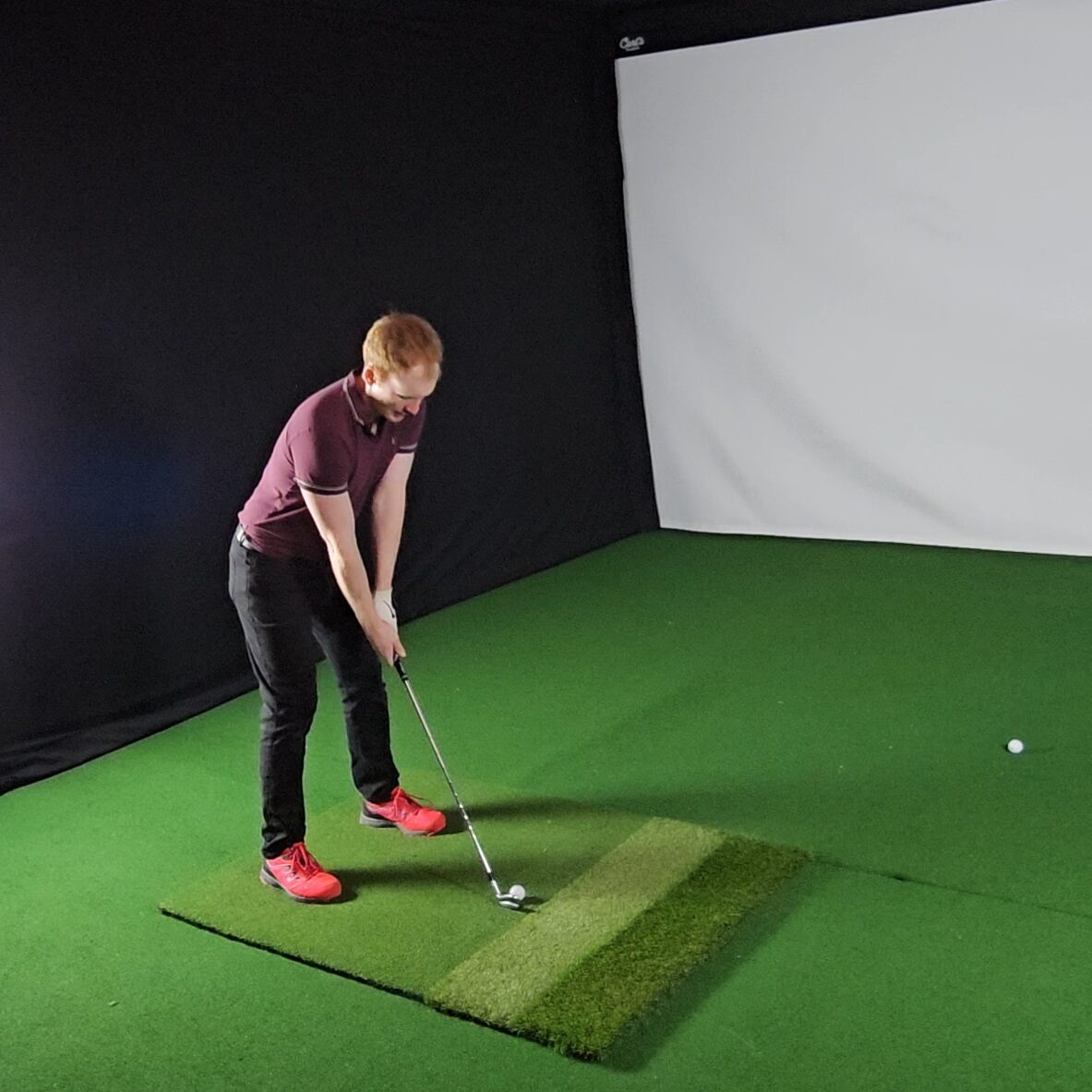
Hello! My name is Alex and it is my mission to bring you all the information you need to build your own home golf simulator! I hope mygolfsimulator.com helps you on your journey to better golf at home!
LEGAL INFORMATION
On this site, you'll find articles on all aspects of building a golf simulator. I will also link to other sites where you can buy some of the simulator components. Some of these links may be affiliate links, which means if you click them I gain a small commission at no extra cost to you. This really helps out me and my site so thank you in advance! mygolfsimulator.com and all related social media accounts are property of Awonline LTD.




